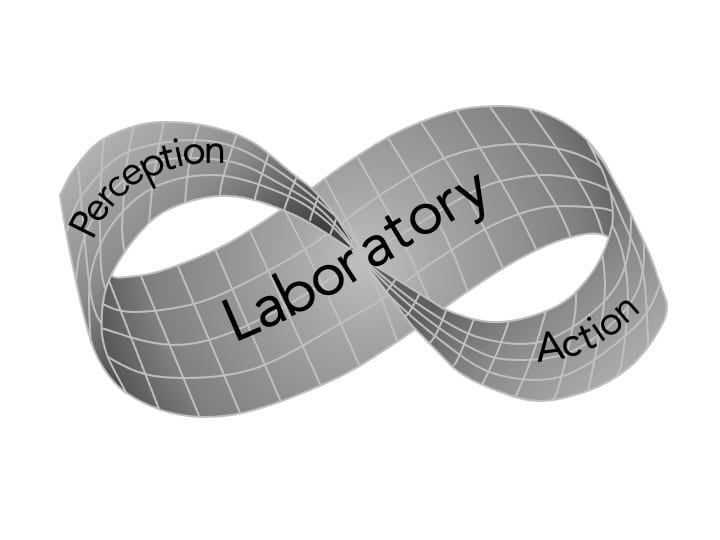
I am the Director of the Perception-Action Lab where we investigate how the perceptual systems enable the performance of everyday (and not so everyday) behaviors. Our approach to these problems is firmly rooted in the theoretical foundation of ecological psychology, initially developed by James Gibson. In this approach, perception and action are treated as continuous processes in which the perceiver awareness of the environment.
Affordances
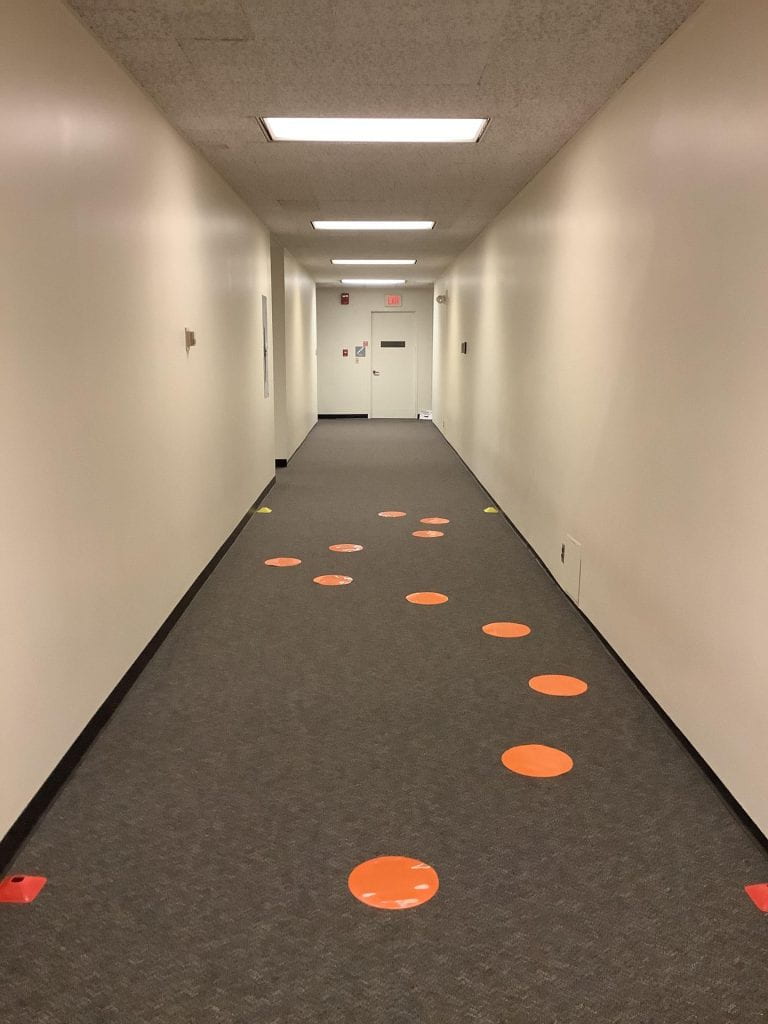
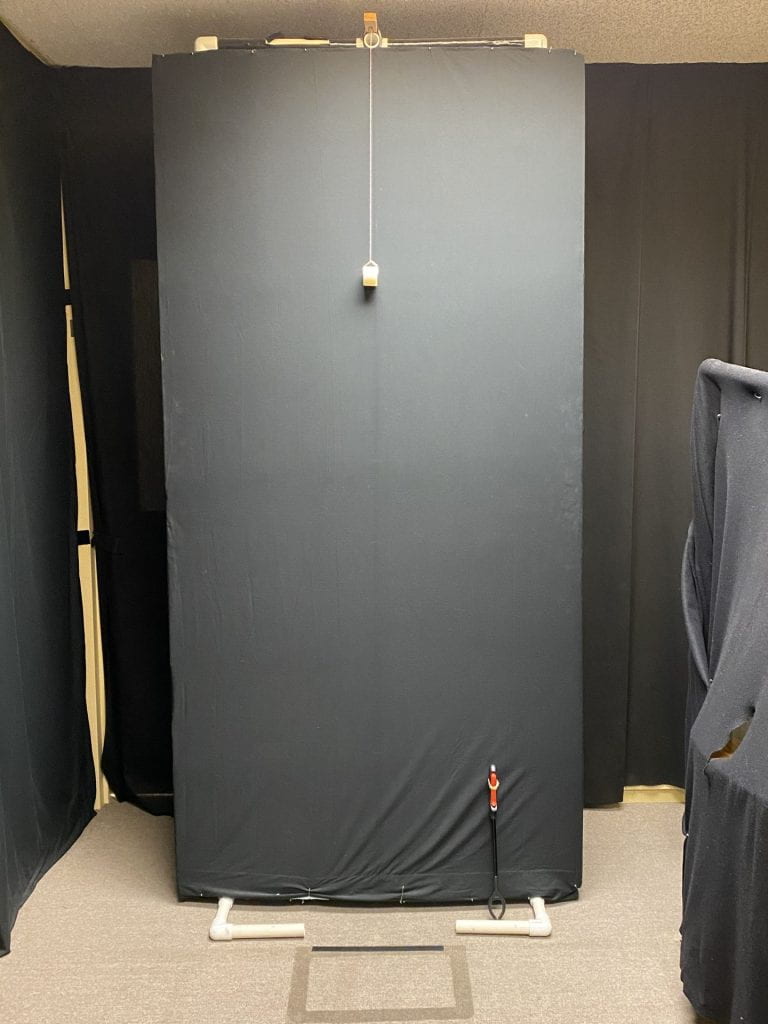
From the perspective of ecological psychology, the purpose of perception is for the control of everyday behaviors. To be useful in this capacity, a person must be able to perceive whether, when, and how to perform such behaviors. Such possibilities depend on the fit between a person’s action capabilities and features of the environment and are known as affordances. We are interested in the factors that influence perception of affordances. The photo on the upper right is of a stepping stone path that a participant created so that they could walk from one place to another. The photo on the lower right is of an apparatus we use to investigate perception of maximum reaching height.
Dynamic Touch and Tool Use
People can perceive a wide variety of functional and geometric properties of hefted or wielded objects even if they are unable to see those objects. We are interested in what factors influence perception by touch, how people choose to grasp objects, and how they use those objects. Not only can people perceive properties of wielded objects, they can also perceive properties by means of wielded objects. In the photo in the upper right is a person using the wooden rod to perceive whether he could stand on the inclined surface. In the photo in the lower right a participant is attempting to perceive the length of a ‘fish’ attached to a ‘fishing pole.’
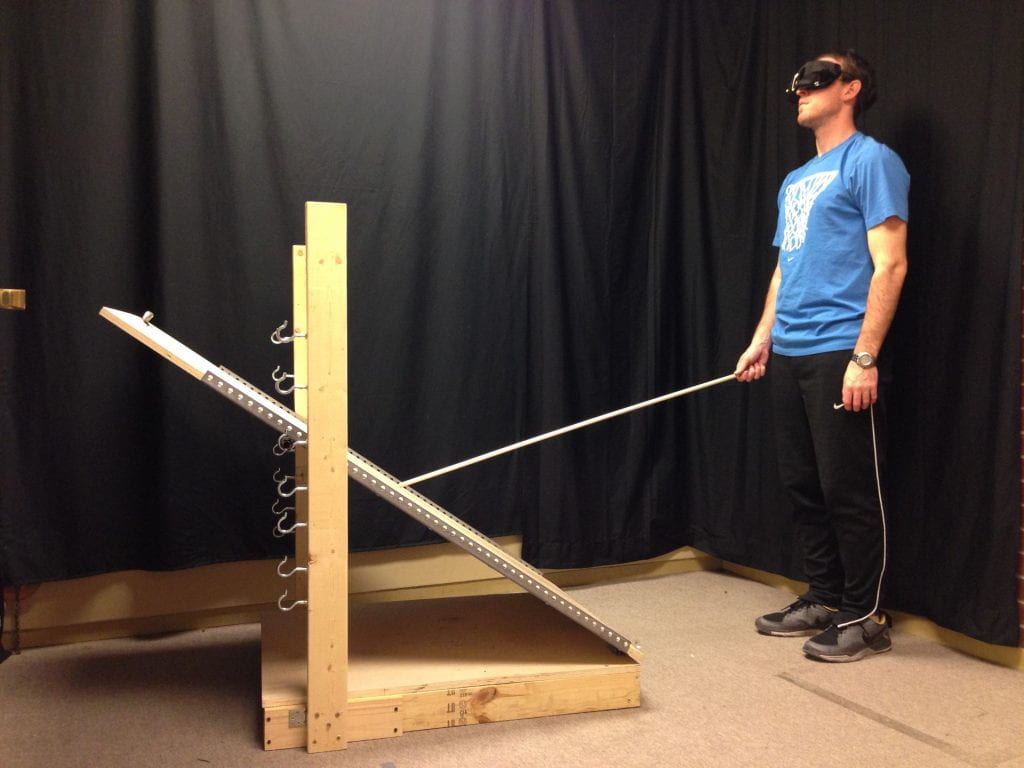
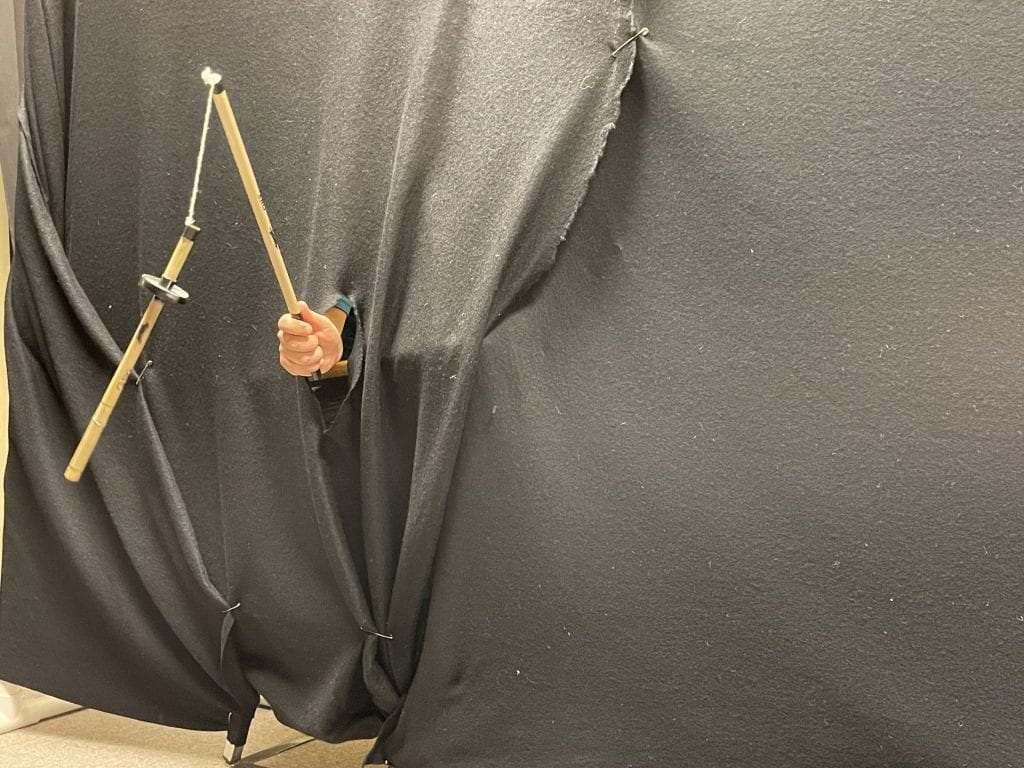
Perceptual Learning
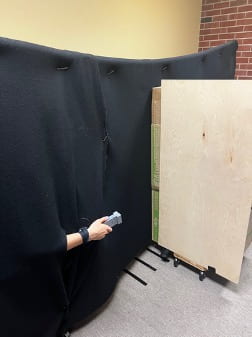
Perceptual skill improves with practice, a phenomenon known as perceptual learning. We are interested in exactly what kinds of practice are necessary and/or sufficient for such improvements in perception to occur. In the photo to the left, a person is learning to use an ‘enactive torch’ (a vibrotactile sensory substitution device to perceive how far away a surface is)
Fall 2024 Students
- Sanako Hishinuma, Graduate Student, Department of Psychology, Illinois State University
- Will Ervin, Graduate Student , Department of Psychology, Illinois State University
- Arghya Kashyap, Graduate Student, Department of Psychology, Illinois State University
- Anthony Pacione, Undergraduate Student, Department of Psychology, Illinois State University
Lab Alumni
- Tyler Duffrin, PhD Student, Clemson University
- Stephanie Hartling, PhD Student, St Louis University
- Alex Dayer, PhD Student, Cognitive Science, UC Merced
- Brian Day, Faculty, Department of Psychology, Butler University
- Drew Abney, Faculty, Department of Psychology, University of Georgia
- Kona (Taylor) Jones, Faculty, Galen College of Nursing
- Brandon J. Thomas, Faculty, Department of Psychology, Universtiy of Wisconsin
Collaborators
- Julia Blau, Department of Psychology, Central Connecticut State University
- Tony Chemero, Departments of Philosophy and Psychology, University of Cincinnati
- Val Farmer-Dougan, Departments of Biology and Psychology, Illinois State University
- Alen Hajnal Department of Psychology, University of Southern Mississippi
- Takahiro Higuchi, Department of Health Promotion Sciences, Tokyo Metropolitan University
- Madhur Mangalam, Biomechanics, University of Nebraska Omaha
- Dawn McBride, Department of Psychology, Illinois State University
- David Rosenbaum, Department of Psychology, UC Riverside
- Peter Smith, School of Kinesiology and Recreation, Illinois State University
- Thomas Stoffregen, School of Kinesiology, University of Minnesota